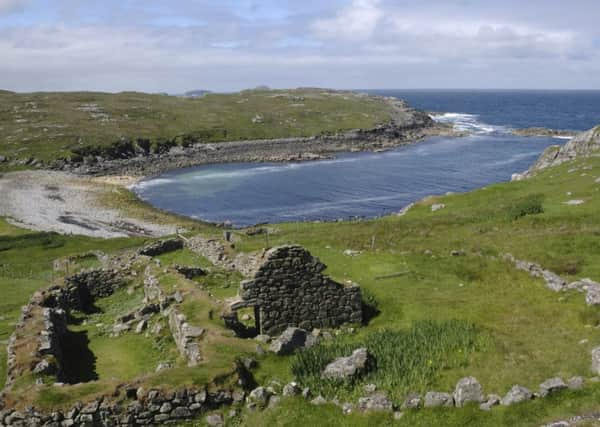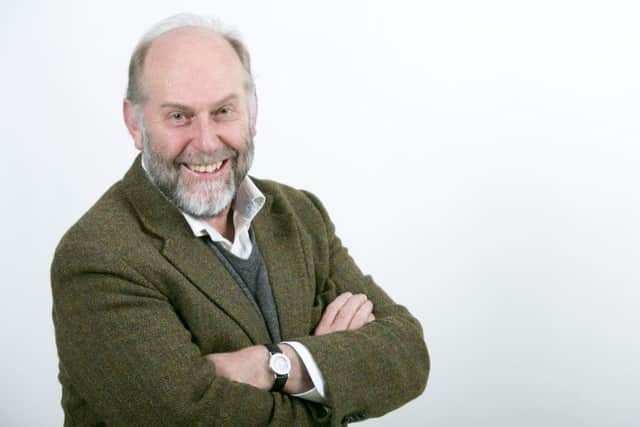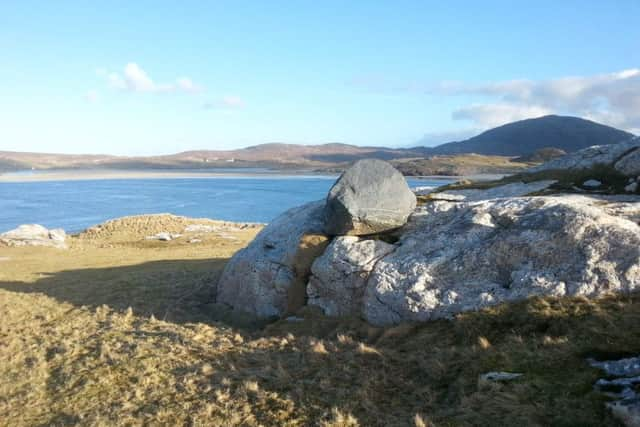What does Scottish DNA tell us about our origins


One summer Sunday afternoon in the 1890s Donald MacIver was driving his pony and trap up the grass track to Miabhig, towards the Atlantic coast of the Isle of Lewis. Beside him sat an old man, his uncle,
Domhnall Ban Crosd.
His last by-name is an indication of demeanour, probably a Gaelicisation of the English word ‘cross’ and Domnhall Ban also had a reputation as a boxer. As the trap breasted the rise above Uig Bay and the heartbreakingly beautiful horizon of the ocean opened before them, it may be that the old man’s stone face softened at the memory of life in this epic, dramatic landscape.


Advertisement
Hide AdA lifetime ago, Domhnall Ban and his family had been cleared off their croft at Carnais and been forced onto the white-sailed ships bound for Canada and an uncertain new life.
But before he died, the old man had made the long journey into the past to come home and see Carnais once more.
When Donald MacIver braked the trap at the place where his croft house had been and his uncle saw that its walls had been tumbled to the ground,
Domhnall Ban could hold back the tears no longer. ‘Chaneil nith an seo mar a bha e”. ‘There is nothing here as it was’, he wept, ‘ach an ataireachd na mara’, ‘except for the surge of the sea’.


That moment prompted MacIver to write his great lyric, An Ataireachd Ard, a hymn to memory and loss, to change and emigration, the wash of history across Scotland.
But Domhnall Ban’s tears may not have prickled so readily had he been alive now. One of the most warming aspects of the ScotlandsDNA project has been the joy of using ancestral DNA to build genetic bridges across the Atlantic.
Advertisement
Hide AdMany in Canada and the USA whose ancestors crowded onto the white-sailed ships have been reunited with their Scottish past through taking DNA tests. Indeed, the whole project, Highland or Lowland, has cast our history in a new and more personal light.
It has made a people’s story of Scotland possible for the first time as science, archaeology and history combined to fashion a new narrative.
Advertisement
Hide AdTests search for markers, tiny mistakes in copying the 6 billion letters of DNA passed on to us from our parents. Our scientists can tell where and when in history these markers arose, and often when approximately they arrived in Scotland. The last ice age made life in in the north impossible until 11,000 years ago and that means that all Scots are immigrants and we can track the movement of people as they came to settle in Scotland over time.
Men have two small pieces of DNA that are very informative about ancestry. From my mother, I inherited mitochondrial or mt DNA and her marker originated a long way from Hawick, her birthplace. It arose in the Indus Valley in Pakistan about 30,000 years ago. My Y chromosome marker from my Dad is much younger and it originated in Scandinavia about 2,000 years ago. Viking raider meets the civilisation of Mohenjo-Daro! Women carry only mtDNA, but it can also trace motherlines deep into the past and trace the journeys of their foremothers across the face of the earth to reach Scotland.
Sometimes these discoveries are strangely moving, and always revelatory.
Since we launched ScotlandsDNA in partnership with The Scotsman in late 2011, almost 8,000 Scots have taken tests. All carry mtDNA and it was striking that most, over 50%, came from the south, from the Ice Age Refuges on either side of the Pyrenees where our ancestors overwintered for millennia in the famous painted caves of South West France and Northern Spain. After the great ice dome over Ben Lomond groaned, cracked and splintered, the first men and women to see Scotland’s big skies walked from the south and the south-east, crossing dryland to the great prehistoric peninsula of Britain.
During the early millennia, a tiny number of hunter gatherers lived around the coasts of Scotland, perhaps no more than a thousand. And reaching back into the darkness of the past, DNA can trace where they came from.
We have completed the first stage of an epic piece of research, nothing less than the beginnings of a family tree of all men on Earth and it has been much enhanced by the findings of ScotlandsDNA.
Advertisement
Hide AdWhat we might call The Great Tree of Mankind is like a gigantic family tree and it works in the same way.
Men pass on the Y chromosome to their sons and it is the single largest piece of DNA inherited as a block and very informative about ancestry, especially deep ancestry back into the mists of prehistory. All men trace their Y chromosome ancestry from a single individual, the man who might be called Adam.
Advertisement
Hide AdIt is thought that he lived in Africa about 210,000 years ago. And as new genetic variants, or markers, occur with successive generations, scientists and historians can trace them and their movement out of Africa and across the face of the Earth.
Men with the same markers form haplogroups and these can be found in high concentrations in specific parts of the world. The way in which haplogroups are located in different parts of the world is a straightforward process. Where men carrying particular markers are most common and where they mutated most is the place where that marker arose.
For example mine is most common in Southern Norway and Sweden, and Northern Denmark and that is where that mistake in genetic copying first took place.
On a huge layout, we have shown how 573 Y chromosome sub-types descend from Adam and relate to each other, and work is ongoing with new findings to double that number in the autumn of 2015. These will include many newly discovered sub-types in Scotland. Our burgeoning customer database has allowed us to define many new and rarer branches of the Tree that have not yet been reported.
What the Great Tree of Mankind shows, for the first time, is how distantly or how closely related large groups of men are. It depends on where their branch is.
To obtain a PDF copy of the Great Tree, please email: [email protected].
Advertisement
Hide AdThe branches of the Tree immediately below Adam divide only very slowly over a long period of time. This is because he and his descendants were hunter-gatherers who probably lived in family bands and patrolled their ranges to find a wild harvest of roots, fruits, fungi and animals they could trap or bring down. Populations grew slowly. The story of how they accelerated is dramatic and will be told in the next installment of this remarkable story.
And finally, an amusing postscript that show the unpredictable nature of ancestral DNA testing. Throughout their recent TV series that took them around the shores of the Baltic Sea, the Hairy Bikers joked with each other that they must be Vikings.
Advertisement
Hide AdPerhaps because of his stature and looks, Si King insisted to Dave Myers that he had to have Viking blood coursing through his veins. He had come home!
But in the last episode the truth turned out to be very surprising. When their test results (done by the ScotlandsDNA team) were revealed, it turned out that it was Dave Myers from Barrow-in-Furness who was descended from Vikings. And more precisely, he is descended from Hebridean Vikings, men originally from Norway who settled in the Hebrides after the 8th century. And his marker is very rare across Britain.
It originated in Norway but it has a concentration in the Western Isles and one clan in particular. Almost half of all men with the surname of Macleod carry Dave’s DNA. 5 per cent of all men on the Isle of Lewis have this marker.
In England and Eastern Scotland, the frequency is tiny at 0.1 per cent. Perhaps he has some Hebridean or MacLeod ancestors?
Si King is not a Viking! Even though people might say that he looks like one. His fatherline comes from the Germanic peoples of the Alpine regions of Southern Germany and Switzerland and Northern Italy. It is not common in Britain at just over 4% of all men. But he was consoled a little when he discovered that all those who have blue eyes are descended from a single individual who lived around the shores of the Baltic about 10,000 years ago. Si has baby blues and they twinkled at that nugget of knowledge.
Next Friday - Part Two: The coming of the Beaker People
Alistair Moffat is founder of Scotland’s DNA
For more information, email [email protected] or call 0345 4502483.